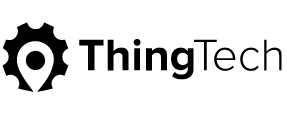How Do I Track Construction Equipment?
GPS tracking, BLE, and telematics can help you track construction equipment, cut costs and improve efficiencies. Read this before demoing or deploying a solution.
GPS tracking, Bluetooth Low Energy (BLE), and telematics can give you visibility into the location and behavior of your construction equipment, which allows you to streamline preventive maintenance, right-size your equipment on rent, and ensure that construction equipment isn’t being under or over-utilized. When determining which vendor and software is the best option for your business, ask yourself the following:
What metrics are important to your business?
First, determine what data you would like to collect. For example, is it important to reduce expenses related to loss or theft? If losing heavy equipment is a problem, you should consider a BLE devices. BLE is a cost-effective solution for equipment that doesn’t (or shouldn’t) leave the job site. The BLE device will send a signal to a nearby smartphone, tablet or BLE Wi-Fi gateway to alert you if a compact excavator is on the move when it shouldn’t be.
On the other hand, if unexpected machine breakdowns are the problem, you should consider advanced telematics or IoT-enabled sensors. These devices pull diagnostic data from your machines in real-time to let you know what condition they’re in so that you can proactively maintain the asset before it breaks down.
Tracking solutions for mobile construction equipment vary for fixed and mobile equipment. Essentially, if the asset you want to track stays on the jobsite, explore BLE. If it’s mobile, such as trucks, GPS tracking may be the answer. And if you want to track utilization, condition, and performance, chose advanced telematics or an IoT-enabled sensor solution. Each scenario has a different set of metrics. So, it’s important to identify which metrics have the greatest impact to your business and can be measured and managed with an IoT solution.
What goals are you trying to achieve?
With IoT deployments, it’s important to start with the end in mind. Can real-time data help cut costs and streamline maintenance? Or is the goal to drive revenues by ensuring that equipment is available for rent when customers need it? Sometimes goals and objectives are intangible. If the goal is to reduce loss or theft, for example, the financial ROI will be difficult to quantify because it’s only realized when something bad happens. However, peace of mind could be a justifiable ROI! Understanding your goals will help you make the best decision when choosing an IoT solution.
How do I choose a vendor?
Your business challenges should determine your IoT solution, and your IoT solution should determine what vendors to consider. Are your potential vendors experts in this space? What demonstrable customer successes can they share? What tools will they provide to help you glean insights into the data you’re generating? This last point highlights for an intuitive web and mobile application design, powerful data visualizations, and robust analytics tools. In the end, you’ll want to narrow down your list of vendors down to 2-3 and schedule online or in-person demos.
Conclusion
Today’s technology is continuing to improve, and the construction industry is no exception. While the technology used for construction has not changed much over the past few centuries, there are still technological improvements that can be made with tracking your construction equipment. Enter ThingTech Real Time. Each piece of equipment receives an electronic sensor, and the tracker transmits information to the ThingTech’s IoT platform, ThingX Connect. The platform digitizes the data into beautiful maps and visualization, that can be seen on the mobile interface as well as your desktop. The telematic sensors can track and analyze as little, or as much information as you would like, all in real time. It’s customizable to any project, worksite or asset class.
Ready to see how ThingTech’s construction equipment tracking can enhance your business?
Request a demo today!


